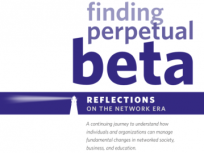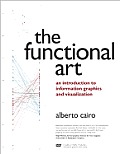Personal learning is a form of assembly, where we find, evaluate, use or discard things we encounter on our way. More often than not, though. we won’t know the meaning of what we discover until long after the fact. Over time, with experience, we’re able to create meaning of (from?) objects, assembling them into applicable learned compounds.
Ah, but what to pick up? We are awash with information, opinions and competing ideas. Through traditional media, social media, conversations, meetings, directives…. we live in an age of overabundance. In prior times information was scarce, and we looked to authority to provide us what was valuable:
“I read it in the Times.” “Our CEO thinks that we should redirect our efforts.” “My trusted financial adviser recommended I put my money into tech.” “My mentor said this book was important.” “I ask my assistant to provide me with daily clippings.” Information was scarce, and we looked to those with expertise, time, and the resources to research and bring us information we could use.
Those days are done. We create our own meaning now. We divine it out of the countless dots – the nodes in our network of people, ideas and information – that fill our universe.

Like ancient explorers, we connect dots and create patterns in order to navigate through our world. Photo by Greg Rakozy via unsplash.com.
The solution becomes not one of knowing what is useful, but of deciding what to pay attention to, and weighing whatever we find for its potential value. There is no way to pre-sort what is worthy; there is simply too much out there and exponentially more being created all the time. Like the scroll at the bottom of a 24-hour news station, we barely notice it’s there. When something catches our attention, we have that “Wait! What was that?!” moment. It’s much the same to navigate through our connected, networked world. Something catches our attention, and we make an immediate judgement: This is something I should pay attention to, something I might be able to use at some point. Or not… let it pass.
The decision is the key. Yes, I like this idea. This is new to me and sparks my interest. This is from a known source that I already trust, so I’m willing to give it a little more attention than I might otherwise. Once a decision is made, apply your process.
-
Clip, copy, save, share it, while tagging in some way that you’ll be able to find it later (that takes practice, but you’ll get better at it with time).
-
Note why you thought it was worthy of carrying with you on your journey: That is a critical part of it, and will inform and refine your knowledge management practice over time.
-
Weigh it for its value over time. Does the idea make sense? Does it add, extend, amplify or purposefully redirect what I do and what I know?
-
Cull frequently, letting go of what it no longer useful.
By following this process, you’ll create your own meaning, and build your own unique area of expertise that is yours alone. That is an exciting proposition. When each of us is self-directed to build our own knowledge, to create our own Personal Knowledge Mastery (PKM), we bring a unique perspective and ability to any organization’s collaborative or cooperative effort. That is a valuable place to be.











